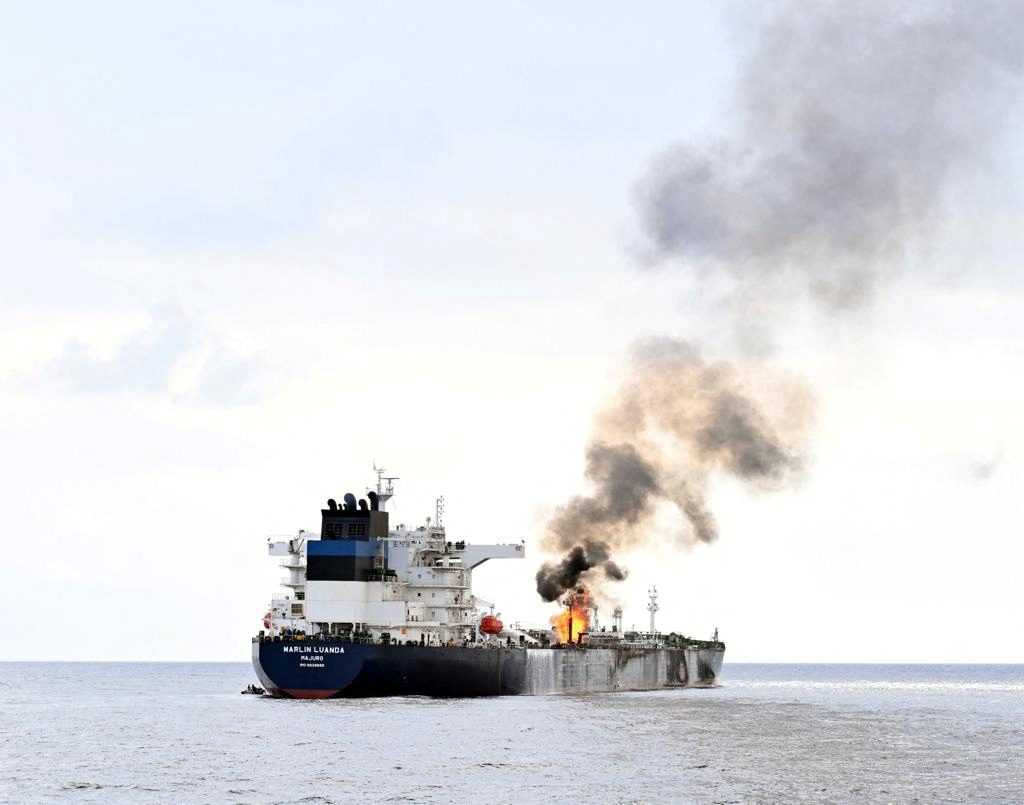Iron ore at Port Hedland, photo (c) BHP Billiton
By Jasmine Ng
(Bloomberg) — The biggest iron ore producers including BHP Billiton Ltd. and Rio Tinto Group are pursuing a flawed strategy by flooding an oversupplied market and they should slow down expansion plans, according to the premier of Western Australia.
“The signal’s going out to the market that there’s going to be ever-increasing amounts of iron ore available even at lower prices,” Colin Barnett said in an interview. “The market signal is wrong, and I believe the major companies have a flawed strategy. I don’t think it’s good business for them or their shareholders,” said Barnett, whose state includes the ore-rich Pilbara, where the bulk of Australian supply is concentrated.
Iron ore sank to a 10-year low below $50 a metric ton this month as surging low-cost supply from Rio, BHP and Brazil’s Vale SA spurred a glut just as China’s demand faltered. The Australian government is contemplating a price as low as $35 in the May 12 budget, the Australian Financial Review said Monday, citing Treasurer Joe Hockey. The slump is hurting government revenues in the biggest shipper and forcing smaller miners to close, with Atlas Iron Ltd. saying on Friday it’s halting output.
“They should reschedule some of their production and give a signal to the market that yes, we’ll cater to iron ore demand and we’ll cater for growth, but we’re not going to flood the market,” Barnett said in Singapore on Sunday. “If Rio and BHP come to me in the future, they will have to seek rights to expand their projects. I might say ‘yes’, I might say ‘no’.”
Citigroup’s Outlook
Iron ore demand in China is declining while expansion plans by the biggest miners remain intact, Citigroup Inc. said in a report received on Monday that cut price forecasts into the $30s. The bank sees export supply growth of over 110 million tons in 2015, of which 68 million will come from Rio.
BHP declined to comment specifically on Barnett’s remarks, while highlighting statements made by its executives. Jimmy Wilson, head of BHP’s iron ore unit, said last month that increasing production while improving efficiency was aiding Australia’s competitiveness. Cutting output would penalize shareholders as supply would be made up by others, Wilson said.
Rio flagged comments from Andrew Harding last month, when the iron ore chief executive said cutting supply or scaling back expansions wouldn’t be in shareholders’ interests. Chief Executive Officer Sam Walsh said in February if Rio reduced output, the forfeited supply would be made up by rivals.
Ore with 62 percent content at Qingdao fell 1.7 percent to $47.53 a dry metric ton on Friday, according to Metal Bulletin Ltd. Prices declined to $47.08 on April 2, the lowest since 2005, based on daily and weekly data from Metal Bulletin and annual benchmarks for ore delivered to China compiled by Clarkson Plc. The commodity is 33 percent lower this year.
No Floor
Hockey’s outlook for prices as low as $35 compares with $60 in December’s budget update and would mean about A$6.25 billion ($4.8 billion) less revenue a year, the report said. There seems to be no floor, the newspaper cited the Treasurer as saying.
Citigroup cut its price forecasts through 2020 by as much as 50 percent, according to the report. Iron ore may average $45 this year, down from a previous forecast of $58, analysts led by Ed Morse wrote. The commodity will average $36 in the third quarter and $38 in the final three months of the year.
Global seaborne supply will expand 8.2 percent this year, outpacing demand growth of 3.9 percent, according to Morgan Stanley. China, which buys about two-thirds of the iron ore transported by sea, grew last year at the weakest pace since 1990 and will probably slow further in 2015.
Fortescue’s Cap
Rio plans output of 330 million tons this year from 295 million in 2014, while BHP targets 225 million tons this fiscal year from 204 million a year earlier. Vale expects to produce 340 million tons this year. Fortescue Metals Group Ltd. will maintain production at current levels of 165 million tons, Chairman Andrew Forrest told the Financial Review.
BHP and Rio shares outperformed iron ore this year while Fortescue tracked losses. Melbourne-based BHP rose 1.4 percent in Sydney in 2015, while Rio lost 2.8 percent. Fortescue sank 34 percent and Vale is 20 percent lower in Sao Paulo.
“I do expect BHP and Rio to expand and have expansion plans, but not bringing it on too quickly,” Barnett said. “To bring on rapid expansion in a depressed market is just not good business. It’s not a good outcome for BHP and Rio’s shareholders.”
–With assistance from Michael Heath, Andrew Hobbs and Iain McDonald in Sydney, Phoebe Sedgman and David Stringer in Melbourne and Jason Scott in Canberra.
©2015 Bloomberg News
Unlock Exclusive Insights Today!
Join the gCaptain Club for curated content, insider opinions, and vibrant community discussions.

 Join The Club
Join The Club













